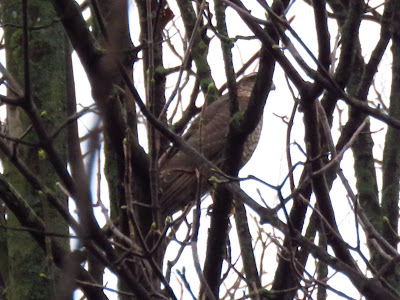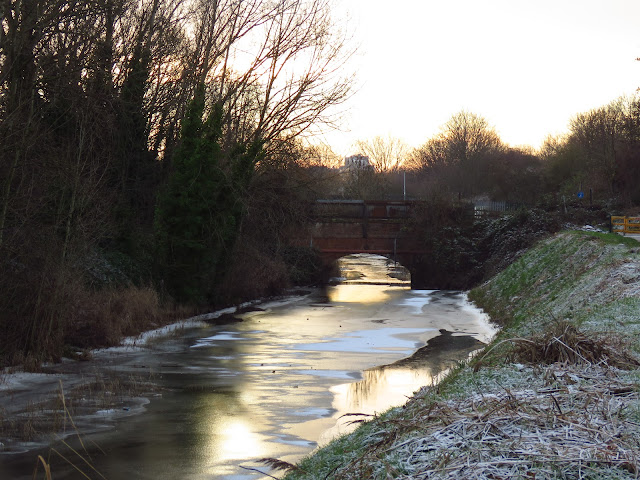Let’s get this out of the way first. I’m not going to disagree that playing fields are not as good habitats as meadows, or unimproved grazed grassland, but I'd hate to lose urban playing fields to plastic turf, so I would like to give here an overview of what playing fields offer at present as intensively managed grassland, not intentionally managed for biodiversity, and then, discuss ideas on how we could enhance and restore the biodiversity of playing fields for biodiversity without detriment from their main use or even enhancing it.
At first sight, playing fields may look like biodiversity deserts: uniformly green and ‘neat-and-tidy’ short turf of little botanical interest. The grass is mowed weekly, pesticides might be used to remove weeds or fertilisers to promote grass growth, the grass trampled by players and spectators of various sports several times a week. In addition, when located in parks, they will be used by (more or less considerate) dog walkers, with dogs on the loose disturbing or actively chasing birds and other wildlife.
Historical changeThis wasn’t always the case. A century ago, cricket pitches were biodiversity havens. Tim Gardiner provides a personal reflection on the change in management of cricket pitches in a century, from a scythed run on a meadow grazed by cows during the week, with the remainder of the field made of long grass teeming with crickets. Then, a technological improvement on mowers changed everything:
‘The change to using gang mowers to cut outfields in the late 1950s has led to much more intensive management of outfields, with it possible to cut the entire playing area to an extremely low sward height on a weekly basis. Such outfields produce more runs as the ball travels quickly across the ground in short grasslands (the vegetation of most outfields is now cut to a height of less than 2 cm). The intensification of cricket ground management has led to the eradication of weeds and tall grassland to such an extent that outfields now resemble intensively grazed pasture or amenity ‘parkland’ swards which are regularly cut.‘ Gardiner provides an example at Matching Green (Essex), where a cricket field is managed in a sensitive way, with long grass and unimproved grassland in the corners of the outfield with a range of plants and thriving with grasshoppers, bush crickets and butterflies like Common Blue and Small Heath. It is a designated Local Wildlife Site (LoWS).'
Despite this, playing fields, even today are havens for urban biodiversity. My natural history local patch, at Sculcoates, boasts a playing field, and I never fail to check what is in store, scanning it with my binoculars on the way there and the way back. In the last few weeks of frosty weather, it has paid dividends with Lapwing and Redshank using it, and this encouraged me to write this post, which I had intended to do for a while.
One of three Lapwing feeding at the Steve Prescott Playing fields. 17 December 2022.
A quiet haven
A key aspect of playing fields is that they provide, a flat, expansive area with good panoramic views, where birds can rest while keeping a watchful eye for natural predators (Sparrowhawk, Fox) or roaming humans and dogs and Domestic Cats. Early in the morning on long summer days, playing fields lack human disturbance for long time periods, before the first games start, or the first dog walkers come along.
Loafing gulls are a regular sight in playing fields, gathering in a mixed species flock near the centre. All the breeding (Herring Gull, Lesser Black-back Gull) and wintering gull species (Common Gull and Black-headed Gull) use them for roosting.
Loafing Black-headed Gulls and Herring Gulls at Steve Prescott playing fields. 20 Feb 2022.
This ‘quiet haven’ effect is maintained in the short days of winter as where less people are out and about, and when playing fields, particularly in Hull, become waterlogged if not flooded after the the winter rains keeping people away.
Flooded football pitches at Pickering Park with gulls and geese. 9 Nov 2019.
Invertebrates, seeds and grass
Playing fields provide food for birds feeding on earthworms, leatherjackets and other invertebrates, like Starling, Jackdaws and Pied Wagtails. Year round, gulls walk or ‘paddle’ on the fields to get earthworms. Occasionally wintering waders, like Lapwing and Redshank, use the fields,. The combination of little disturbance and food means that young are often brought by their parents to the playing fields, with families of Starlings, Gulls and Crows often seen there in late spring.
A Lesser black-back Gull adult calls by its fledgling at Steve Prescott Sport Centre playing fields.. 18 July 2022.
A Jackdaw collecting food for its nestlings at the Steve Prescott Sport Centre playing fields. 14 May 2022.
A Redshank and a Jackdaw search for food while Black-headed, Common and Herring Gulls loaf at Steve Prescott Playing fields. 21st December 2022.
A Magpie and a Pied Wagtail mirror each other as they look for invertebrates at Steve Prescott Playing fields. 8 October 2022.
A flock of Starlings feeding on the playing fields at Pickering Park. 11 Jan 2022.
Even with their relatively low plant diversity, many playing fields retain at least Daisies, Dandelion and Buttercups. Their weedy seeds and the grass seeds feed Woodpigeons and finches such as Linnet and Goldfinch. Thrushes like Blackbirds and Song Thushes will use the edges of the fields if they have nearby refuges in the shape of trees or scrub. Redwings might join them in the winter. The presence of tall trees and bushes with berries nearby will support a pair of Mistle Thrushes, which are happy feeding even in the middle of the playing field.
A Goldfinch feeds on Dandelion seeds at King George Playing fields, Cottingham. 7 May 2021.
Canada and Greylag Geese watch a loose dog at Pickering Park playing fields. 12 December 2022.
It is the short sward of grass itself that Greylag and Canada Geese are after, and flocks of geese regularly use playing fields, especially if they are near a body of water, like the rugby and football pitches in public parks. It is worth searching for the odd Pink-footed or Barnacle Goose in their midst.
A Kestrel perched on the trees surrounding Oak Road Playing Fields. 16 Feb 2021.
Kestrels use playing fields that incorporate some long grass, where voles will thrive. Foxes can be seen roaming the playing field especially in the early morning.
A Fox entering the playing field at Steve Prescott Sport Centre. 14 May 2022.
Even this narrow strip of long grass had singing Long-winged Coneheads, a bush-cricket species, at King George V playing fields, Hull. 15 October 2022.
Playing field make up a substantial proportion of urban green spaces. Changes across them can have noticeable effects on biodiversity in the city. Many conservation principles are now being applied in urban settings around amenity grassland. For example, several sport clubs are already implementing them, sometimes in coordination with their local Wildlife Trusts. The corners and edges of playing fields may be managed for wildlife without detriment to the use of sports. Hedgerows, lines of shelter trees and boundary long grass strips, with a reduced mowing regime removing clippings, could be incorporated into the design and management of playing fields. Stopping or reducing the use of chemical pesticides and fertilisers, or establishment of scrapes or small ponds added to favour drainage and encourage aquatic insects and wildlife. Another key aspect is education. The value of playing fields for biodiversity must be communicated to end users in the form of information panels or posters, which need to explain the effects of any changes in management. This will not only increase biodiversity per se, but the wilder-looking and more diverse landscape, and the increased wildlife encounters they will promote, will likely increase the pleasure of the experience of the sport itself, and contribute to reconnecting people and nature.
References
Amenity Grassland Barnsley Biodiversity Action plan.
Here.
Sports and urban biodiversity: A framework for achieving mutual benefits for nature and sports in cities by the IUCN.
Here.
Gardiner, T. More runs, fewer crickets! Bulletin of the Amateur Entomologists’ Society 69, 146–153 (2010). Article available in
this link.
UK sports clubs boost biodiversity by letting nature go wild on their grounds.
Guardian article here.


























































